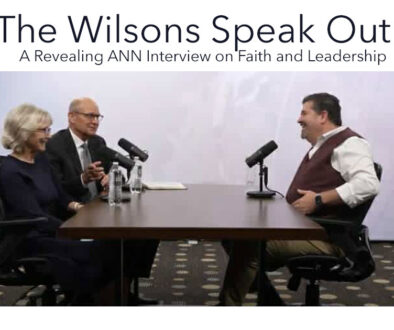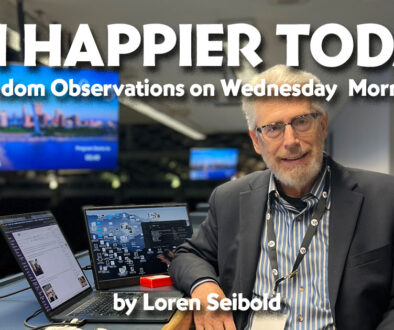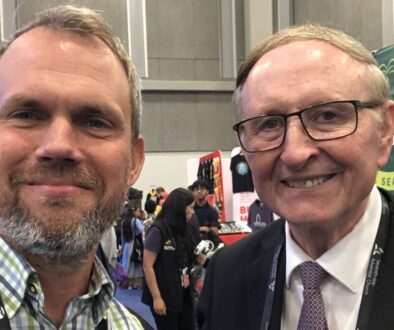My Take: Finding a Way Forward
by Raj Attiken, December 17, 2014: It hasn’t been that long ago when computers were gigantic machines, some of them approximately 100 feet long, 8 feet tall, 3 feet wide, weighing 30 tons each. Large rooms were needed to house them. If you had work that required a computer, you took it to the few whizzes that knew how to operate these monstrous pieces of equipment. These mavens were clearly in charge. Only they knew how to make these computers work. Then came machines that could do the same work, but could fit on an office desk. More people now learned how to use a computer. A short while later, another adaptation of the machine showed up in the market. This new generation of computers could do as much as or more than the gigantic computer of yesteryear, but could fit on your lap. And then came the technologies that could be hand-held, by anyone, anywhere. One result of these disruptive innovations is that now just about anyone in any part of the globe has easy access to what once was controlled by a handful of experts. These newer inventions have propelled massive changes in the authority structure, accessibility, and availability of computer technology to the masses. They have disrupted the order of things in the world of computing and far beyond.
The phenomenon of disruptive innovation is also happening in the realm of spirituality, religion, and religious institutions. Churches and denominational systems are feeling the impact. Many forms of disruption are occurring in the life of denominations and congregations. Here are three:
Firstly, a number of para-church and autonomous organizations, founded and staffed by Adventists, have entered the arena once almost solely occupied by denominational staff. These organizations produce an extensive array of resource material and provide support services that were once produced and delivered to congregations and church leaders by staff persons at denominational offices. A walk through the exhibit hall at an ASI Convention or a General Conference Session will introduce one to the vast number of individuals and organizations that produce and market products and services to the Seventh-day Adventist Church. These have cut into the market-share that denominational departments once held for similar materials and services. Because these entities differ widely in their theological and ministry orientations, congregations and their leaders are selective about which of them they will patronize for their ministry resources.
Secondly, resources and information from individuals and organizations in all parts of the globe are directly and easily accessible to church and ministry leaders via the Internet, World-Wide Web, and social media. The quantity and quality of available resources in just about every discipline or endeavor of life today is staggering. While most of them are not designed or produced exclusively for a church audience, their potential value and applicability to the church are enormous, nonetheless. This reality is yet another contributing factor to the diminished market share now retained by denominational agencies and program staff. Information and resources that congregations once looked to the denomination for are now readily and easily available elsewhere, often at little or no cost, yet with high quality and up-to-date research. Although these require some adaptation, discerning Adventists are well able to sort out how best to modify and apply these resources in appropriate ways within the Adventist church context. After all, that’s what is largely done in our denominational offices as well, where ideas are adopted from the world out there and adapted, repackaged, and distributed with an Adventist label attached to them!
A third trend that is dramatically challenging the role of the church and denomination is the increased democratization of spirituality. Growing numbers of Americans are extending the habits and assumptions of democracy to personal spirituality. The right of each person to experience God in his or her own way is prized. With easy access to information about the traditions, practices, and beliefs of adherents to religions all over the world, people are customizing spirituality to fit their own interests and desires. They are finding pathways to spirituality that are most meaningful to them. For some this is through knowing and understanding. Others find the spiritual disciplines of prayer, meditation and fasting meaningful. For some it is through art, music, and the aesthetic. For many it is through a relationship with nature and the natural world. Some find spiritual meaning in their relationship with objects, artifacts, and rituals.
Custom-made, generic spirituality can be quite attractive and appealing. Yet, left to its own, it can also be shaped to feed our egos and make no demands on our lives, love, and devotions. Regardless of how we view this brand of generic spirituality, we must acknowledge that its widespread presence has disrupted and marginalized the influence, authority, and control that the church once had over people’s faith journeys. Those who claim to be “spiritual but not religious” often use the phrase to describe their detachment from any religious institution. The implications for churches and denominational organizations are enormous.
The trends unleashed on us by disruptive innovations must nudge us to reexamine how we shape our life as a faith community, how we design our ministries, and how we obtain and utilize resources. One major aspect of our current paradigm in the Adventist denomination that invites investigation is how we develop and deploy programs and services to local congregations and their leaders. This facet of our organization is rife with redundancies. Each level of the organization is in on the game. Each derives legitimacy by its portfolio of goods and services. Each produces its own set of programs, resources, or services – mostly in the very same areas of congregational life and ministry.
With the abundance of resources available to them, congregations and their leaders are no longer “captive” audiences to the denomination’s program and resource staff as they once might have been. Moreover, our current organizational model for providing materials and services to our members and churches wasn’t designed for today’s decentralized, personalized, super-networked, and information-rich world. Whereas at one time we had a captive market (our churches and members) at which we directed attention from every level of the organization, the nature of that market has changed. We no longer need three or four layers of the organization to simultaneously aim their ministry efforts at the local congregation and on how it can live out its sacred mission. This paradigm of redundancy is unessential and, therefore, dispensable. It is also becoming unsustainable. A modest, streamlined, and relevant resourcing model can be designed to take its place. That’s my take!



